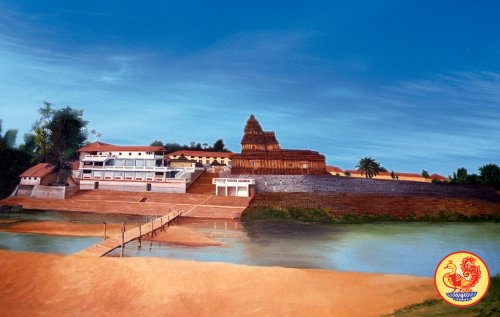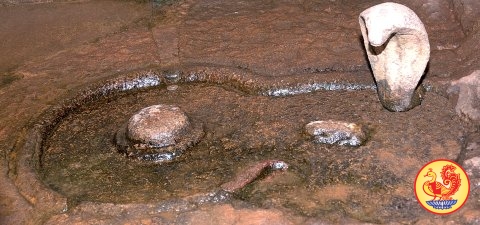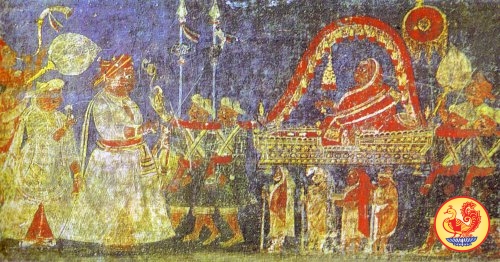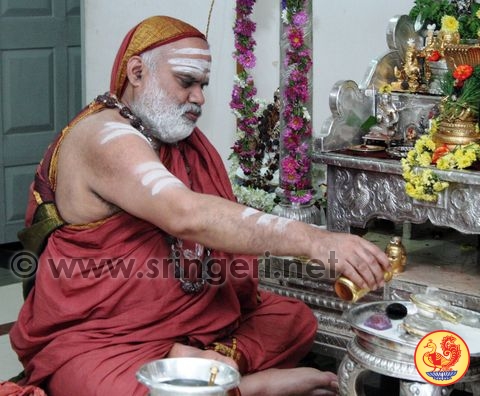Friday, December 28, 2012
Wednesday, December 26, 2012
Statue of Henja Naik unveiled
The statues of King Shivaji and Henja Naik, a local warrior who fought against the British rulers, were brought to Karwar on Sunday afternoon from Miraj in a truck. Both the statues are made of bonze and have been manufactured in Miraj in Maharashtra.
The statues are being installed by the district administration of Uttara Kannada, the Tourism Department and the Karwar city Municipal Council. The responsibility of installing the statues has been taken up by the Nirmiti Kendra. The cost of making each statue is Rs. 20 lakh, it is said. The sources from Nirmiti Kendra said the statues of Shivaji and Henja Naik were 10 feet and six feet tall respectively. The statue of Shivaji weighed 1.4 tonnes, whereas the statue of Henja Naik weighed four quintals.
Both the statues would be inaugurated by Chief Minister Jagadish Shettar on December 26 at the Karwar Municipal Garden.
Earlier, the Karwar beach was selected as the venue for the installation of the statues. But following objections by environmentalists it was decided to install the statues at the Municipal Garden.
http://www.thehindu.com/todays-paper/tp-national/tp-karnataka/statues-of-shivaji-henja-naik-to-be-unveiled-on-december-26/article4233927.ece
All pictures by Rukumanand Mayekar, Karwar
Source - Karavali Munjavu, Karwar
Friday, November 30, 2012
R B S Komarpant of Cancona in the News - Navhind Times
Let Konkani be the unifying force for Goans: Damodar Mauzo
Published on: July 14, 2010 - 22:46
More in:
More in:
POINGUINNIM: A book on tiatr titled ‘Teag’, written by Mr Ramesh B Komarpant was recently released at the hands of Damodar Mauzo, who was the chief guest on the occasion. The function was presided over by Goa Konkani Academy vice-president, Mr Vincy Quadros. Others present on the occasion were vice-president of Ravindra Bhavan, Margao, Mr Shridhar Kamat, Mr kamlakar Mhalshi and a host of other dignitaries.
Mauzo, speaking on the occasion, said that Konkani in the Devanagri and Romi script go hand in hand, but there were sections of people with vested interests who were trying to create rifts among the people over the issue. He said the time has come to fight any attempt at divisions and instead work with unity adding that working towards the promotion of both the scripts was the need of the hour. Mauzo maintained that the two forms of Konkani theatre namely ‘tiatr’ and ‘natak’ have a distinct identity and hence comparison of any sort was unfair.
Mr Shridhar Kamat in his speech stated that tiatr had its own strengths and any comparison with any other forms of drama would be inappropriate and that Konkani tiatr has contributed immensely towards the development of the Konkani language. He hoped that with the number of people choosing to write in Konkani increasing, Konkani would receive the much needed boost. Though Canacona doesn’t have a Ravindra Bhavan, musical activities and other forms of dramas continued to thrive here he said suggesting that the facilities and schemes offered by the Ravindra Bhavan at Margao should also be extended to the people of Canacona so that Canconkars too could get a platform to showcase their talent.
Mr Vincy Quadros took the opportunity to advise budding writers to forward one copy of their book to the executive committee. He further listed out a few schemes that writers could avail of.
Mr Sudesh Naik explained the preface of the book while Mr Vassalo Carvalho spoke on Konkani tiatr, its composition, setting and inception. Earlier, Mr Kamlakar Mhalshi welcomed the gathering, while Mr Anant Agni compered the function. Mr R B S Komarpant proposed the vote of thanks.
http://www.navhindtimes.in/iwatch/let-konkani-be-unifying-force-goans-damodar-mauzo
Wednesday, November 28, 2012
Kom Tribes In Tulunadu (Mangalore, Puttur, Udupi and Kundapur) - Komarpanth ??
Stumbled on an Article on the web, which makes an interesting reading, and gives a new insight on the "Origin of Komarpanths"
Kom Tribes In Tulunadu (Mangalore, Puttur, Udupi and Kundapur)
The word ‘kom’ or ‘komu’ in many of the south Indian languages like Kannada means tribe or caste. Origin of the word is generally traced to the Arabic word ‘quom ‘. It seems the Arabic word ‘quom’ (or kom) was derived from the name of an ancient tribe called Kom. (Besides, consider the possible relation and analogy between the words 'kom' and 'community'.)
The Kom tribes inhabited in parts of southern India in the antiquity. They were farmers, artisans and soldiers.The Koms were known as 'Komme' or 'Komar' in Kannada. There is an area called 'Komarbeedu' in the outskirt of Mysore city.
Similarly, 'Komarpanths' form a significant population in present coastal Uttara Kannada and Goa. In British records they were known as 'Comarapeca', the 'peca' (or 'paika') being equivalent word for soldier. Thus Komarpanths of Uttar Kannada consider themselves as Kshatriyas.
The great reformer Basavanna is said to have been from 'Komme' caste. In Andhra Pradesh there is a community known as 'Komma' or 'Kamma'. One of the regions in Andhra is known as 'Khammam'.
However, there are no direct evidences of existence of Kom tribes in present Tulunadu or in other parts of southern India, except recent migrants from Uttara Kannada and Goa region. However, there are a number of village names in Tulunadu that carry the signatures of the ancient Kom tribes and these place names start with the prefix of ‘kom’.
Konchadi -
‘Konchādi ‘(pron: kon-chāDi ) forms a large village, now amalgamated into the city in the northern part of Mangalore. Konchadi, the western part, can be accessed partly from Bijai Derebail road and the eastern part from Kadri -Yeyyadi road. The place name Konchadi can be analysed as follows: Kom+cha+aDi. (=Village of the koms).The ‘kom’ is the name of the tribe that inhabited in this area probably in the antiquity (ca 200BC-200 CE?). The suffix ‘-aDi ‘refers to habitation or a village. The modifier ‘cha’ = of, in Prakrit group of languages( Or was it a word from Kom language?).'Koncham' were also recognized as a tribe or caste in south Indian census records.
Ancient Kom tribes
The’ kom’ is the name of a tribe (and language) of Northwestern Cameroon, Africa. The Cameroon Kom language is a member of African Bantu language family. According to prevalent legends they came from northern Africa to Cameroon following trails of a python.
Similarly, there are ‘kom’ tribes in northeastern States of India especially Manipur. They also speak Kom language, a member of Tibeto-Burmese language family. Legends among the ‘Kom’ people of Manipur suggest that they came from a large cave located in China. One of their leader ancestor who rescued these tribal people from a tiger was known as ‘Saichepa’. Another legend suggests that these tribes came from Middle East. Probably these two legends suggest dual origin of these tribes. Kom tribes from Africa possibly migrated in segments to Asia and parts of northeastern India.
Sajipa
The Kom tribes that inhabited coastal Tulunadu in the antiquity could have been from North eastern India, as can be deduced from the following possible legendary link.
Sajipa is a large village on the southern bank of River Nethravathy in Bantval Taluk. The exact meaning of the word ‘Sajipa’ is not known now as it has been lost in the wilderness of obscure past history. It is possible that the word Sajipa is a variant of the word ‘Saichepa’. Saichepa was an ancestor of Kom people, as indicated by the legends of Manipur.
Therefore one of the possibility is that the village name ‘Sajipa’ represents the name of one the ancestor of Kom tribes. Saichepa is also one of the sub-tribes of Koms in Manipur. The Kom tribes who inhabited in Tulunadu once upon a time could have designated the place name 'Sachepa' (later modified to 'Sajipa') in honour of one of their their forefather and a sub-tribe.
Kompadavu
Kompadavu ( d, pronounced mild as in English ‘the’)is a large village, covered with hard outcrops of laterite, near Mucchur and Niddodi. The village name Kompadavu (kom +padavu) means the plateau of Kom tribes.
Komdodi
Komdodi is a hamlet near Yedapadavu and Kuppepadavu. The place name can be split into Kom +da +oDi or the habitation of Koms.
Kombār
Kombar is a village in Puttur taluk. Kom+bār means the area of Kom tribes.
Ancient Kom tribes
The’ kom’ is the name of a tribe (and language) of Northwestern Cameroon, Africa. The Cameroon Kom language is a member of African Bantu language family. According to prevalent legends they came from northern Africa to Cameroon following trails of a python.
Similarly, there are ‘kom’ tribes in northeastern States of India especially Manipur. They also speak Kom language, a member of Tibeto-Burmese language family. Legends among the ‘Kom’ people of Manipur suggest that they came from a large cave located in China. One of their leader ancestor who rescued these tribal people from a tiger was known as ‘Saichepa’. Another legend suggests that these tribes came from Middle East. Probably these two legends suggest dual origin of these tribes. Kom tribes from Africa possibly migrated in segments to Asia and parts of northeastern India.
Thursday, October 11, 2012
Founders' picture of the Komarpanth Samaj, Pune
Founders' picture of the Komarpanth Samaj, Pune - Courtesy Mr Ajit Naik, Pune (https://www.facebook.com/ajitnaik251968/info)
Sunday, March 11, 2012
Opposition for grants to English medium schools BY Konkani Tiatr writer R B S Komarpant - NEWS ARCHIVE OF THE HERALD
HERALD - 27th March 2011,
Page 5 Opposition for grants to English medium schools gains momentum
CANACONA, MARCH 26: The movement to oppose demands for government grants to English medium schools has begun picking in Canacona, as a few people, including Marathi protagonists, met at the residence of a Tiatrist in Canacona to discuss the issue on Friday evening. After discussing the issue, a resolution was taken condemning Education Minister Babush Monseratte for supporting the demand to provide government aid to English medium schools.
The meeting took place at the residence of Konkani Tiatr writer R B S Komarpant to prepare a roadmap for the taluka level meet on Monday and for April 6 meeting at Azad Maidan in Panjim. Komarpant sought to blame the Christian community for demanding government grants to English medium primary schools. "By demanding grants for English medium primary schools, the Christians are dividing the people," said Komarpant, who convened the meeting on Friday. Konkani writer Kamlakar Mhalshi informed that no particular community should be made responsible for the issue, "but we should explore and solve the issue as to why suddenly parents of children attending primary schools run by the archdiocese now want to shift to English medium." "We should know the reason and educate parents first, who apparently with a reason have decided to demand English medium education to their children from elementary level." "We should not forget that the archdiocese managed schools in the State had shifted to Konkani medium once the primary education in mother tongue was made mandatory and no one had bothered to question it then," he said. ' Amid discussion over demands for government grants to English medium schools in the State, few area-wise representatives were chosen and asked to bring more people to attend the Monday meet, which also will be attended by speakers from other parts of the State.
In the meeting, representatives were also asked to involve elected representatives, including both MLAs, panchayat members, Mahila Mandals, Devasthan committees and others so that more people attend the meet. Incidentally, the demand for English medium primary education is high even in Canacona taluka. Sources have told Herald that in Canacona there are over 300 students studying in an unaided English medium private primary school run by an education society, while there are only 700 students studying in seven aided Konkani medium primary schools. Ulhas Pai Bhatikar (State awardee and retired headmaster), Shantaji Naik Gaonkar (retired headmaster), Kamlakar Bhalshi (Konkani writer/Sarva Shiksha Abhiya Canacona i/c), Anant Agni (teacher), RBS Komarpant (Konkani writerlTiatrist), Shantaram Komarpant (retired government primary teacher), Ravindra Raikar (retired teacher), Chinmoy were some of the people present at the meeting.
Sunday, January 8, 2012
History of Sri Sharada Peetham at Sringeri | Sringeri Sharada Peetham
History of Sri Sharada Peetham at Sringeri | Sringeri Sharada Peetham

A contemporary painting of Sringeri
 Sri Kappe Shankara - A Shrine on the banks of the Holy Tunga river in memory to the
Sri Kappe Shankara - A Shrine on the banks of the Holy Tunga river in memory to the
glorious sight witnessed by Sri Adi Shankaracharya; A serpent giving shade from the
scorching sun to a pregnant frog in labour pains
 Sri Vidyaranya Mahaswami being accorded royal honour in the Adda-Pallaki by the
Sri Vidyaranya Mahaswami being accorded royal honour in the Adda-Pallaki by the
Vijayanagara Emperors, Harihara and Bukkaraya. A 17th century painting based on the
mural at Virupaksha temple at Hampi. This tradition has continued
since then and is followed even today.

Jagadguru Sri Adi Shankara Bhagavatpada established the first of the four Amnaya Peethams1 at Sringeri more than twelve centuries ago to foster the sacred tradition of Sanatana Dharma.
Hallowed for all times by Sage Rishyashringa who stayed and performed Tapas here, Sringeri attracted the great Acharya with a remarkable sight.

A contemporary painting of Sringeri
Tradition has it that after the Acharya had dispersed all the non-Vedic creeds prevailing in the country, He was on the look-out for a convenient and holy place where he could establish an institution to spread the truths of Advaita Vedanta. When the Acharya came to Sringeri, he saw an unusual sight on the banks of the Tunga. A cobra was seen spreading out its hood over a frog in labour pains, to give it shadow from the scorching mid-day sun. Struck with the sanctity of the place, which could infuse love between natural adversaries, the Acharya chose this very location to establish His first Math.

glorious sight witnessed by Sri Adi Shankaracharya; A serpent giving shade from the
scorching sun to a pregnant frog in labour pains
The Madhaviya Shankara Digvijayam describes that the Acharya came across many virtuous people at Sringeri and taught them the doctrine of Advaita. He then invoked the Divinity of Knowledge, Goddess Sharada and consecrated an icon of the Goddess. Thus the Peetham He founded at Sringeri in South India for fostering the Vedas and the sacred tradition of Sanatana Dharma came to be known as the Dakshinamnaya Sri Sharada Peetham.
The Acharya appointed his prime disciple, Sri Sureshwaracharya as the first Acharya of the Peetham. Since then, the Peetham has been blessed with an unbroken Guru Parampara, a garland of spiritual masters and Jivanmuktas representing Sri Adi Shankaracharya. The succeeding Acharyas have led a life of such austere penance that it has led disciples to adore in them the radiance of Sri Adi Shankara Himself.
Besides being a centre of spiritual power, Sringeri also came to be known as a great place of traditional learning owing to the presence of Goddess Sharada and the erudition of the Acharyas of the Peetham. The Acharyas were instrumental in bringing forth commentaries on the Vedas and in further expounding the Bhashyas of Sri Adi Shankaracharya. The Acharyas also wrote a number of independent works related to Advaita besides producing a number of hymns underlining their ardent devotion to the non-dual Supreme worshipped in multifarious forms. The Peetham thus came to be regarded as the Vyakhyana Simhasana, The Throne of Transcendental Wisdom. Consequently, the Birudavali hails the Acharya as the occupier of this throne. Many regard Goddess Sharada Herself to be moving in the form of the presiding Acharya of the Peetham.
In the 14th century, royal patronage to the Peetham began with the founding of the famous Vijayanagar empire under the divine guidance of the 12th Acharya, Jagadguru Sri Vidyaranya. The austerity of the Acharya influenced the rulers to such an extent that they began ruling in the name of the Acharya and granted the Peetham the rights over secular administration of the land. At the rulers’ request, the Acharya began conducting a Durbar during the Navaratri festival - an occasion deemed by the rulers to honour their Guru. Subsequently, the Acharya came to be known as the Karnataka Simhasana Prathisthapanacharya and the Peetham became a mighty institution - a Samsthanam and is known to this day as the Jagadguru Shankaracharya Mahasamsthanam, Dakshinamnaya Sri Sharada Peetham at Sringeri. Over the succeeding centuries, a number of empires and rulers including the Mysore Maharajahs Hyder Ali and Tipu Sultan, the Nizam of Hyderabad, the Peshwas and the Keladi rulers and Travancore Rajas were drawn towards the Peetham and respected the Acharya as their Guru.

Vijayanagara Emperors, Harihara and Bukkaraya. A 17th century painting based on the
mural at Virupaksha temple at Hampi. This tradition has continued
since then and is followed even today.
In the recent past, the Sharada Peetham has shone through the lives of the Acharyas - Jagadguru Sri Sacchidananda Shivabhinava Nrisimha Bharati Mahaswamigal, the re-discoverer of Sri Adi Shankara’s birthplace at Kalady and the founder of the famous Pathashala at Sringeri; followed by the renowned Jivanmukta, Jagadguru Sri Chandrasekhara Bharati Mahaswamigal; succeeded by the crest jewel of Yogis, Jagadguru Sri Abhinava Vidyatirtha Mahaswamigal. They have all left indelible impressions in the hearts of the disciples.
With such a rich history associated with Sri Adi Shankaracharya’s first and foremost Peetham, many wonder at the aptness of the Acharya’s choice of locating the Peetham at Sringeri, a spot replete with a hoary past, and bountiful with natural splendour and serenity.
Today, the Sringeri Sharada Peetham bedecked with an unbroken chain of Acharyas continues to uphold the principles of Sanatana Dharma with the 36th Acharya Jagadguru Shankaracharya Sri Sri Bharati Tirtha Mahaswamiji acting as a treasure of spiritual wisdom and peace for all seekers.

Jagadguru Sri Sri Bharati Tirtha Mahaswamiji worshipping Lord Chandramoulishwara
Glossary
- 1. Amnaya Peetham
- Amnaya–The Veda; Peetham–Throne. Lit. throne of the Veda. Seat of learning established for the preservation and propogation of the Veda. Jagadguru Shankaracharya established four centres in the four corners of the country for the safeguard and propogation of the four Vedas and appointed each of his prime ascetic disciples as the heads of each centre respectively.
- 2. Sanatana Dharma
- Hoary / Universal Dharma. Lit. Universal law that is binding on all creation since time immemorial.
Subscribe to:
Posts (Atom)








.jpeg)
